History of Italian astronomy
-
1600 The century of the Telescope
1609-1610
Galileo’s first observations with the telescope:
In Padova, Galileo discovers mountains and valleys on the Moon, as well as sunspots, the phases of Venus, the myriad stars which make up the Milky Way and the four main moons of Jupiter
1630-1639
With the telescopes built by Francesco Fontana, Giovanni Battista Zupi discovers the horizontal bands of Jupiter and the phases of Mercury
1655
In Bologna, Gian Domenico Cassini builds the world’s longest meridian to confirm the Gregorian calendar. This also allows him to check Kepler’s second law
1664-1666
With a telescope built by Giuseppe Campani, Cassini discovers spots on the surface of Mars, as well as the Great Red Spot on Jupiter, and measures the rotation period of both planets. A few years later, in Paris, he discovers the four moons of Saturn
1665
Giovanni Battista Riccioli and Francesco Grimaldi publish a map of the Moon, whose nomenclature is still in use today for lunar geology
-
1700: The century of Celestial Mechanics
1712-1726
Establishment of University of Bologna’s Observatory : this is Italy’s first real observatory, from whose tradition the Astronomical Observatory of Bologna will be born
1734-35
Establishment of the Observatory of the University of Pisa (nowadays Domus Galileana)
1760-1764
Establishment of the Observatory of Brera in Milan (nowadays known as the Astronomical Observatory of Brera)
1767
Establishment of the Observatory of Padua (nowadays known as the Astronomical Observatory of Padua)
1787
Establishment of the Astronomical Observatory of the Collegio Romano, run by the Jesuit Fathers
1790
Establishment of the Astronomical Observatory of Palermo
1790-1792
Giovan Battista Guglielmini demonstrates the Earth’s rotation through the fall of the bodies from the Tower of the Observatory of Bologna, and then from the “Asinelli” Tower
-
1800: The century of Astrophysics
1801
At the Palermo Observatory, using the Ramsden Circle, Giuseppe Piazzi discovers Ceres. Initially classified as the eighth planet, Ceres is now recognized as a dwarf planet. Once its true nature was understood, the term “asteroid” was coined for it
1812-1819
Establishment of the Astronomical Observatory of Capodimonte in Naples
1822
After several decades of activity in other locations, the Astronomical Observatory of Turin was built inside Palazzo Madama. Afterwards, it was moved to Pino Torinese
1858
Angelo Secchi publishes in Rome the first photographic atlas of the Moon. A few years later, he suggests the first spectroscopic classification of the stars
1869-1872
Establishment of the Astronomical Observatory of Arcetri, after several decades of activity in other locations in Florence
1871
The Società degli Spettroscopisti Italiani (nowadays “Società Astronomica Italiana” – Italian Astronomical Society) is established. This is the world’s first institution for the promotion of Astrophysics. The publication of the Memorie della Società degli Spettroscopisti Italiani will inspire the foundation of the Astrophysical Journal
1880-1885
The construction of the Bellini Observatory is completed on the hills of Mount Etna, followed by the construction of the Astrophysical Observatory of Catania downtown
1887
This is the start of the international Carte du Ciel project to map millions of stars, involving the Observatory of Catania and the Vatican Observatory
1893
Establishment of the Observatory of Collurania in Teramo: originally it was a private institution, which was later donated to the Italian State in 1917 (nowadays Astronomical Observatory of Abruzzo)
1899
Establishment of the Astronomical Station of Carloforte (South Sardinia), from whose tradition the Astronomical Observatory of Cagliari was born
-
1900: The century of space
1923
The Astronomical Observatory of Trieste, whose history starts with the Nautical School in 1753, is inserted among the Italian Astronomical Observatories
1925
Inauguration of the Solar Tower at the Observatory of Arcetri, one of the first examples in Europe of this kind of instruments
1926
Inauguration of the Observatory of Merate, a separate branch of the Observatory of Brera, with a 1-m diameter Zeiss telescope, which at the time was the largest Italian telescope, and one of the largest in Europe
1936
Inauguration of the astronomical station of Loiano, with a 60-cm Zeiss telescope, at the time the second largest in Italy
1938
Inauguration of the Astronomical Observatory of Rome in Monte Mario (nowadays hosting INAF Headquarters) which unifies the two previous observatories of the capital city
1942
Inauguration of the Astrophysical Observatory of Asiago. The Galileo telescope, with a 122-cm diameter, becomes the largest telescope of both Italy and Europe
1948
The monumental building in Monte Porzio Catone, which should have hosted the National Astronomical Observatory, is assigned to the Astronomical Observatory of Rome
1952
From a 1935 prototype, Guido Horn d’Arturo builds in Bologna a 180-cm “segmented telescope”. This is the first example of multi-mirror telescope, nowadays used in all major astronomical observatories worldwide
1959
In the United States, Italian-born physicists Bruno Rossi and Riccardo Giacconi start to study X-ray astronomy: their study will lead to the launch of Uhuru, the first satellite dedicated to the X-ray observation of the cosmos
1964
Margherita Hack becomes the first woman scientist to manage an Italian Astronomical Observatory in Trieste
1965
Inauguration of the Observing Station of Campo Imperatore and of the Radio astronomical station of Medicina
1966
Inauguration of the Observing Station of Basovizza
1968
At the Astrophysical Observatory of Asiago two infrared-emitting objects are discovered, whose galactic nature is confirmed a few years later: the Maffei 1 and Maffei 2 galaxies
1969
Several institutes originate from the branches of the Italian Group of Cosmic Physics, which had been created at the start of the Sixties: the Laboratory for Cosmic Physics and related Technologies in Milan (with a separate section in Palermo), the Laboratory for Technologies and Study of Extraterrestrial Radiation in Bologna, the Laboratory for Space Astrophysics and the Laboratory for the Physics of Interstellar Space in Rome, dedicated to high-energy astrophysics and the instrumentation for space exploration (nowadays INAF institutes)
1970
The Institute for Radioastronomy is established in Bologna
1973
Inauguration of the “Copernico” telescope at the observing station of Cima Ekar in Asiago. With a 182-cm diameter, this is the largest instrument for optical astronomy in Italy
1976
Inauguration of the 152-cm G.D. Cassini telescope at the astronomical station of Loiano, the second largest in Italy
1982
Italy joins ESO, the European Southern Observatory
1988
Inauguration of the Radiotelescope in Noto (Sicily)
1997
The Italian-Dutch satellite BeppoSAX observes the first gamma-ray burst whose afterglow is also observed: this allows astrophysicists to measure its distance
1998
Inauguration of the Telescopio Nazionale Galileo in La Palma (Canary Islands). With a 3.58-m mirror, it is the largest wholly Italian instrument for optical astronomy
1999
Establishment of INAF – Istituto Nazionale di Astrofisica, the National Institute for Astrophysics. It is the main Italian public research institute for the study of the Universe
-
2000: The century of multi-messenger astronomy
2003
The first binary pulsar, PSR J0737-3039, is discovered by an Italian-led team of researchers, with the radio-telescope in Parkes, Australia, and the Lovell telescope in the United Kingdom
2004
Inauguration of the Large Binocular Telescope on Mount Graham, Arizona (INAF has a 25% share)
2009
International Year of Astronomy, proclaimed by the United Nations, at the request of Italy, to celebrate 400 years from Galileo’s observations
2011
- The AGILE satellite discovers Gamma Ray-Bursts coming from the Crab Nebula
- The GAPS (Global Architecture of Planetary Systems) collaboration starts its observations at the Telescopio Nazionale Galileo in order to characterise the systems of exoplanets
- VST (VLT Survey Telescope) is inaugurated at the Observatory of Paranal, Chile
- The Dawn mission orbits for the first time around an asteroid, Vesta. In 2015, it will enter into orbit around dwarf planet Ceres
2013
- Publication of the first map of the Planck satellite with the anisotropies of the cosmic microwave background radiation
- Inauguration of the Sardinia Radio Telescope: with a 64-m parabolic antenna, it is the largest radio-telescope in Italy
2014
The Rosetta mission achieves the first ever comet landing
2016
The largest and most accurate 3D map of the distant Universe, with over 90,000 galaxies, is completed with the VIMOS spectrograph on ESO's Very Large Telescope
2017
The first kilonova is discovered, with the joint detection of gravitational waves and electromagnetic radiation, kicking off the era of multi-messenger astronomy
2018
- The first 3D map of the Gaia satellite is published, with the positions, distances and motions of 1.7 billion stars in the Milky Way
- An Italian-led team presents first evidence of the existence of underground liquid water, based on the data from the Mars Express probe
2019
- The MAGIC observatory, in La Palma, catches the first gamma-ray burst in very-high-energy gamma rays
- The first image of a black hole is released by the Event Horizon Telescope
- Italy leads the negotiations for the signing of the treaty that establishes the SKA Observatory, an intergovernmental organization to oversee the construction of the world’s largest radio-telescope
2020
- With the onset of the Covid-19 pandemic, the astronomical community offers its expertise and know-how to fight against the virus, through several technologies, such as air and surface disinfection through special UV-C lamps
- During lockdown, the first Fast Radio Burst originating in the Milky Way is discovered, accompanied by the detection of flashes in both X- and gamma rays
2022
- The DART mission performs the first planetary defense experiment, by deviating the orbit of the Dimorphos asteroid: the Italian nanosatellite LiciaCube records the impact
- Several space and ground telescopes observe the brightest gamma-ray burst of all times
- The IXPE satellite images for the first time a supernova remnant in polarised X-rays
2023
Discovery of the low-frequency gravitational wave background through timing of pulsar radio signals. The Sardinia Radio Telescope is also involved
2025
The first data from the Euclid space mission is released to the public
2027
The 33rd General Assembly of the International Astronomical Union will take place in Rome






